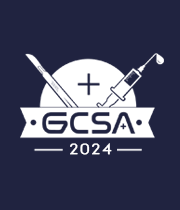Title : Comparison of continuous wound local anesthetics infusion and IV PCA for ratio of acute postoperative hypertension after hepatectomy
Abstract:
Acute postoperative hypertension (APH) is a common complication during the anesthesia recovery period that can lead to adverse outcomes, including cardiovascular and cerebrovascular accidents especially the patients who underwent hypertension.
Pain relief by block of parietal nociceptive afferent nerves using continuous wound infiltration with local anaesthetics and intravascular(IV) PCA may be both beneficial in multimodal postoperative pain management and stable vital sign.
In the postoperative care unit(PACU), vital sign checked out both continuous wound infusion of ropivacaine and IV PCA after open hepatectomy was analysed in a prospective, randomized, double-blinded, placebo-controlled trial.
Methods:
Eighty-two patients who have underlying hypertension were randomized to two groups to R and S. The group R used 0.5% ropivacaine (ON-Q group) using an elastomeric pump which delivered 4 ml h−1 over 48 h through two multiholed Soaker catheters placed between the transverse and the internal oblique muscles and the s.c. space. The group S used IV PCA(fentanyl 1000mcg mix to N/S total 100ml, delivered 1ml h-1 over 48hr).
Rescue medication was injected in the condition of hypertensive crisis (nicardipine 1mg, brevibloc 10mg, fentanyl 50mcg)
Vital signs (BP, heart rate) , total dosage of rescue medication and visual analogue scale (VAS) were recorded.
APH was defined as an increase in systolic BP by more than 20% or an increase in diastolic BP to above 110 mmHg.
Hypertensive crisis was defined as a systolic BP ≥ 180 mmHg or a diastolic BP ≥ 110 mmHg, with or without acute target organ involvement.
Results:
Under the conditions of the study, S was more vulnarable for APH than R .(R=20, S=31 p<0.05). In both group who have hypertensive crisis(R=5, S=7) , the total number of rescue medication required to achieve therapeutic BP response was significantly less in the group R (mean count was R=1, S=4). VAS score was similar in both group in the PACU(mean VAS 3~4)
Conclusions:
Continuous surgical wound infusion with ropivacaine lower the risk of APH. This would be make more positive surgical outcome in the patients underwent hypertension or risk of hypertensive symptoms.
Audience Take Away Notes:
- Acute postoperative hypertension can often occur after general anesthsia. But many anesthesiologist and surgeon overlook this symptom. But many study revealed that the untreated hypertension make poor outcome after surgery
- Continuous wound local anesthetic infusion is used in many center for pain control after surgery. But this study also revealed that this instrument can control blood pressure which make positive outcome after surgery.



